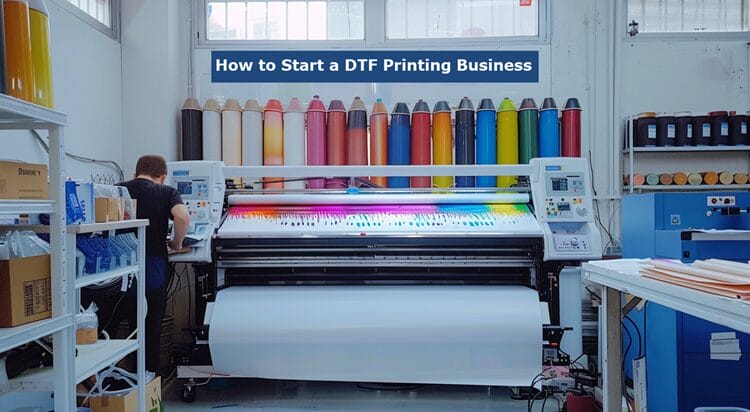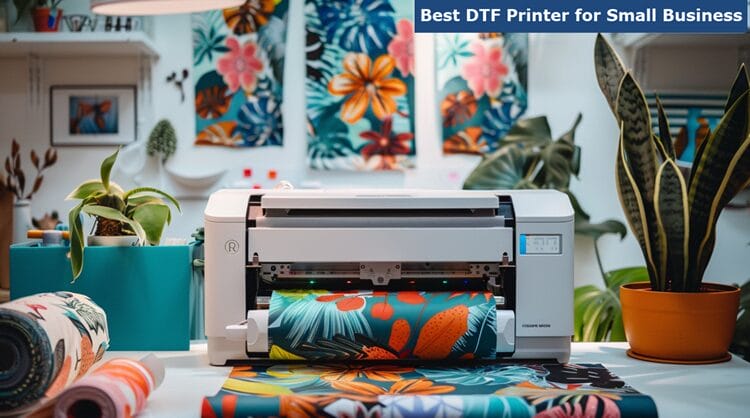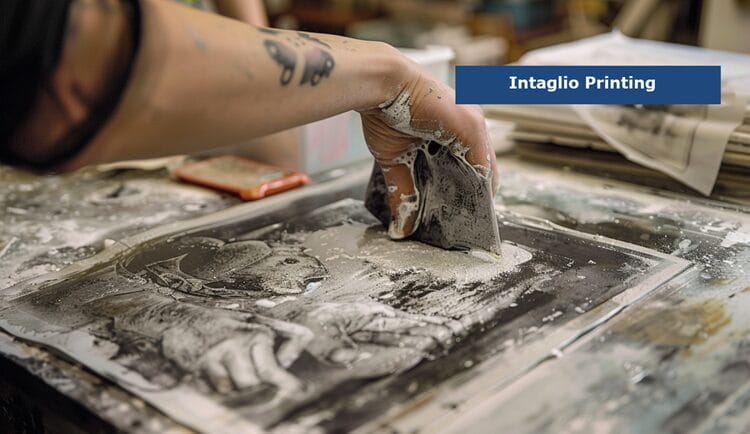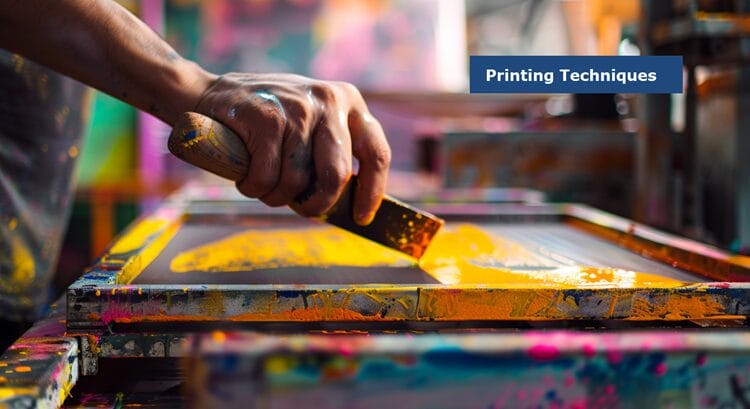
As we dip our rollers into the velvety black ink, the possibilities for creating crisp, detailed prints seem endless.
Exploring the nuances of different ink options, from water-based to oil-based inks, can lead us to uncover the secrets behind selecting the best ink for lino printing that will make your prints truly stand out.
Let's delve into the subtle, yet crucial, differences that can elevate your prints to new heights.
Join us on this journey of discovery as we aim to find the perfect ink to enhance your lino printing creations.
Key Takeaways
- Speedball Fabric Screen Printing Ink: Vibrant colors, fast drying, ideal for fabric and paper.
- Charbonnel Aqua Wash Etching Ink: Rich, lightfast, suitable for various techniques, and easy cleanup.
- Caligo Safe Wash Relief Ink: Non-toxic, versatile for relief printing, and lightfast pigments.
- Speedball Fabric Block Printing Ink: Vivid colors, washable, non-toxic, easy cleanup.
What Are the Best Inks for Lino Printing?
When it comes to choosing the best inks for lino printing, there are several top contenders to consider:
- Speedball Fabric Screen Printing Ink
- Charbonnel Aqua Wash Etching Ink
- Caligo Safe Wash Relief Ink
- Speedball Fabric Block Printing Ink
- Speedball Water Soluble Block Printing Ink
These are all highly regarded options with unique qualities that cater to different printing needs.
Each of these inks offers a specific set of features, such as quick drying times, vibrant colors, and compatibility with various surfaces, making them versatile choices for artists and printmakers alike.
#1. Speedball Fabric Screen Printing Ink
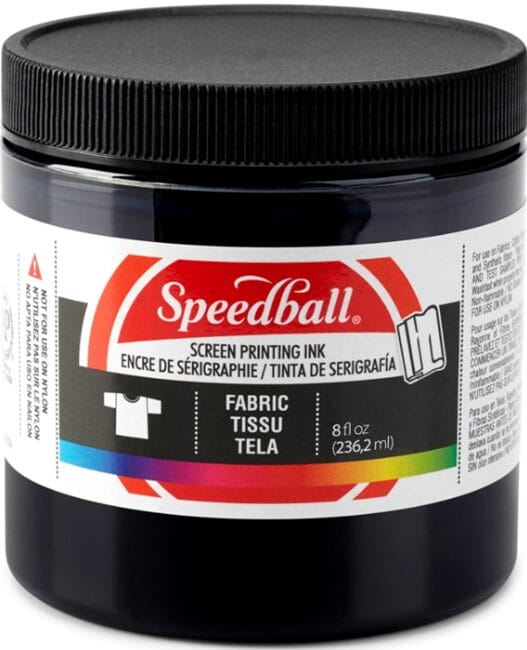
Best For: Artists and crafters looking for vibrant fabric paint with easy application and lasting results.
Pros:
- Easy to mix and create a variety of colors
- Dries fast with easy cleanup
- Provides vibrant and strong colors on fabrics
Cons:
- Requires practice for optimal results in ink application and screen printing techniques
Overall Thoughts:
When it comes to lino printing, our experience with Speedball Fabric Screen Printing Ink has shown it to be a versatile and reliable choice for artists.
While primarily designed for fabric surfaces, this water-soluble ink can also yield impressive results on linoleum blocks. Its vibrant colors and excellent coverage make it a standout option for lino printing, allowing for intricate designs and clear impressions.
The ink's fast drying time is advantageous for multi-color prints, and its smooth consistency ensures clean and consistent results.
While it may require some experimentation to achieve optimal outcomes in lino printing techniques, the payoff in terms of color intensity and longevity on paper is well worth the effort.
Overall, Speedball Fabric Screen Printing Ink proves to be a valuable asset for artists seeking quality results in their lino printing projects.
Get started with the Speedball Fabric Screen Printing Ink.
#2. Charbonnel Aqua Wash Etching Ink
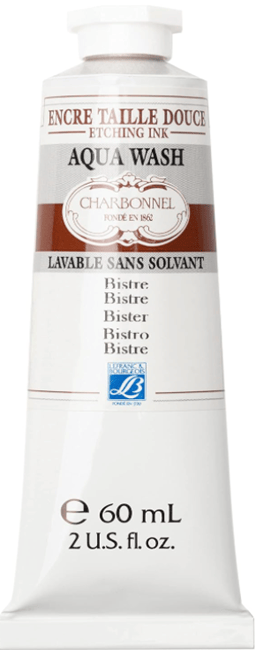
Best For: Artists and printmakers looking for high-quality, versatile inks for various printing techniques.
Pros:
- Made from extra-fine quality pigments for rich and vibrant results
- Lightfast and permanent once dry, ensuring durability over time
- Odorless, non-toxic, and easily cleaned with soapy water for convenient use
Cons:
- Some colors may be hard to find due to popularity
Overall Thoughts:
In our experience with Charbonnel Aqua Wash Etching Ink, we find it to be a standout choice for lino printing due to its exceptional lightfastness, ease of use, and versatility across various printmaking techniques like intaglio and lithography.
The ink's formulation with extra-fine quality pigments delivers rich and vibrant results that hold up well over time, ensuring lasting and durable prints.
Its odorless and non-toxic nature not only makes it safe for artists to use but also simplifies the cleanup process with just soapy water.
While some colors may be in high demand, the overall quality and performance of Charbonnel Aqua Wash Etching Ink make it a top recommendation for artists and printmakers seeking high-quality, reliable inks for their creative projects.
Get started with the Charbonnel Aqua Wash Etching Ink.
#3. Caligo Safe Wash Relief Ink

Best For: Artists seeking a non-toxic and easy-to-clean oil-based ink for relief printing techniques.
Pros:
- Non-toxic and safe for artists to use
- Easy cleanup with soap and water
- Suitable for various relief printing techniques
Cons:
- Difficult seal to open on the container
Overall Thoughts:
Caligo Safe Wash Relief Ink is our top choice for artists seeking a non-toxic and easy-to-clean oil-based ink for relief printing techniques like linocut and woodcut.
This Cranfield Caligo ink offers high-quality results with its water-soluble formula, ensuring simple cleanup with soap and water.
The lightfast pigments and minimal driers guarantee longevity in prints, making it a reliable option for printmakers.
Despite the slightly tricky container seal, the versatility and semi-opaque finish of this ink, along with its average drying time, make it a popular and practical choice for artists looking to achieve consistent and professional results in their relief printing projects.
Get started with the Caligo Safe Wash Relief Ink.
#4. Speedball Fabric Block Printing Ink

Best For: Artists and crafters looking for a versatile and easy-to-use fabric block printing ink with vibrant colors and excellent washability.
Pros:
- Bold and opaque colors
- No heat setting is required for permanent results
- Easy clean-up with soap and water
Cons:
- May dry quickly
Overall Thoughts:
In our experience, Speedball Fabric Block Printing Ink has proven to be a standout choice for lino printing due to its bold and opaque colors that truly pop on various fabrics like cotton, polyester, linen, and rayon.
What sets this ink apart is its exceptional washability and the fact that no heat setting is required for a permanent result, making it incredibly convenient for artists and crafters alike.
The ease of clean-up with just soap and water is a major plus, and the non-toxic certification ensures peace of mind for users of all ages.
While it may dry quickly, this ink's durability and vibrant colors make it a reliable option for creating striking prints.
Overall, Speedball Fabric Block Printing Ink is a top recommendation for those seeking versatile and user-friendly ink for their lino printing projects.
Get started with the Speedball Fabric Block Printing Ink.
#5. Speedball Water Soluble Block Printing Ink
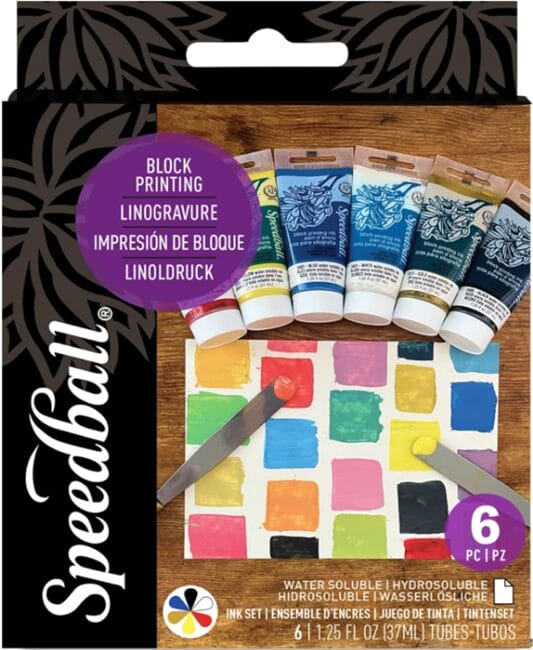
Best For: Artists looking for vibrant and easy-to-use water-soluble block printing ink with a wide color range.
Pros:
- Premium quality ink ground and milled for bold prints
- Nice tack for even coverage and consistent results
- Easy clean-up with soap and water
Cons:
- Ink may be considered expensive by some
Overall Thoughts:
When it comes to lino printing, the Speedball Water Soluble Block Printing Ink stands out as a top choice for artists seeking vibrant and high-quality inks.
With its premium consistency and wide color range, including options like Black, Red, Blue, Yellow, White, and Gold, this ink offers endless possibilities for creating stunning prints.
The ink's nice tack ensures smooth coverage and consistent results, making it a favorite among artists of all levels.
One of the key advantages of this ink is its easy clean-up with just soap and water, adding convenience to the creative process.
While some may find the ink to be on the pricier side, the quality and performance it delivers make it a worthwhile investment for artists looking to elevate their lino printing projects.
Get started with the Speedball Water Soluble Block Printing Ink.
#6. Schmincke Aqua Linoldruck Ink
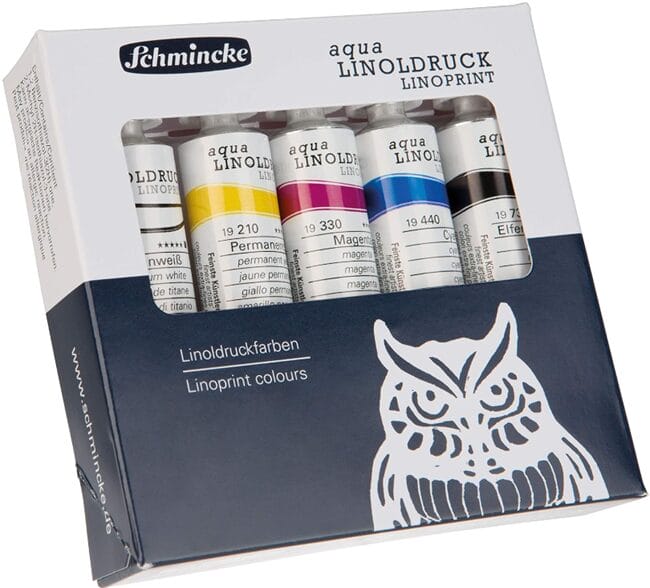
Best For: Artists looking for vibrant and lightfast water-based inks for lino printing projects.
Pros:
- Wide range of colors for creative expression.
- Easy to mix and dilute with water for customization.
- Quick drying time of 15 minutes for efficient workflow.
Cons:
- Not waterproof, which may limit certain applications.
Overall Thoughts:
The Schmincke Aqua Linoldruck Ink set stands out as a superior choice for artists engaged in lino printing due to its vibrant color selection, quick drying time, and ease of customization.
The range of colors, including titanium white, permanent yellow, magenta, cyan, and ivory black, offers ample opportunities for creative expression.
The water-based formulation allows for easy mixing and dilution, providing artists with the flexibility to achieve their desired effects.
While the inks are not waterproof, their smudge-proof finish and fast drying time of 15 minutes make them efficient and user-friendly.
Overall, for artists seeking high-quality, lightfast inks for lino printing projects, the Schmincke Aqua Linoldruck Ink set is a top recommendation for its excellent performance and creative possibilities.
Get started with the Schmincke Aqua Linoldruck Ink.
#7. Speedball Oil-Based Block Printing Ink

Best For: Artists and printmakers looking for professional-quality, long-lasting block prints in lino printing.
Pros:
- Vibrant color range with archival-quality prints
- Versatile color palette for various artistic projects
- Easy cleanup with mineral spirits or turpentine
Cons:
- Some issues reported with dried-up tubes
Overall Thoughts:
We find the Speedball Oil-Based Block Printing Ink to be a top choice for artists and printmakers seeking professional-quality and long-lasting block prints in lino printing.
Its vibrant color range and archival quality offer a versatile palette for a variety of artistic projects, ensuring vibrant and durable results.
With easy cleanup using mineral spirits or turpentine, artists can work efficiently without hassle.
While some users have reported issues with dried-up tubes, overall, the ink's permanent, waterproof, and AP non-toxic qualities make it a reliable option for creating high-quality prints on paper and textiles.
Ultimately, the Speedball Oil-Based Block Printing Ink is a solid choice for artists looking to achieve exceptional results in their lino printing endeavors.
Get started with the Oil-Based Speedball Block Printing Ink.
What Are the Different Types of Inks Available for Lino Printing?
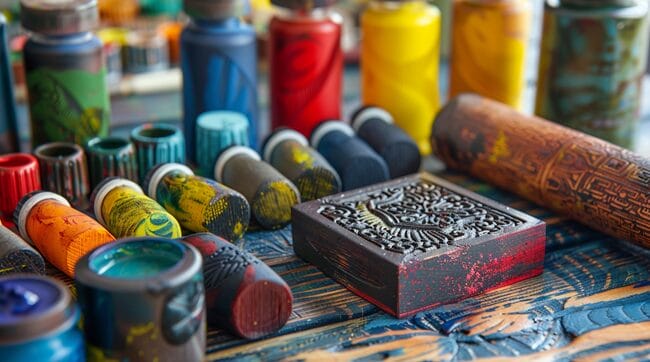
When it comes to lino printing, artists have a few main types of inks to choose from: oil-based, water-based, and relief inks.
Oil-based inks are known for their slow drying time and rich colors, while water-based inks are more environmentally friendly and easier to clean up.
Relief inks, specifically designed for block printing, offer a good balance between drying time and color intensity.
Oil-Based Inks
Our preferred choice for lino printing inks is the reliable and versatile Cranfield’s traditional oil-based relief inks due to their wide color range and ease of use.
These oil-based inks have a thick viscosity, making them ideal for detailed work and allowing for smooth color application on large sheets.
The inks stay open for days when mixed, offering flexibility in the printing process.
Additionally, oil-based inks enable easy color mixing, providing consistent results from the slab to the final print. While the inks can be stiff in cold weather, warming them up can improve handling.
Another option is the Caligo Safe Wash inks, which offer the same pigment quality as traditional oil-based inks but can be cleaned with soap and water, albeit with a smaller color range.
Water-Based Inks
Having explored oil-based inks for lino printing, it’s now essential to consider the various types of water-based inks available in the market for this artistic process.
When it comes to water-based inks, one crucial aspect to note is the ink texture.
Different brands like Graphic Chemical, Cranfield, Lukas, and Schminke offer varying textures ranging from stiff to fluid. For instance, Graphic Chemical closely resembles the texture of oil-based ink, while Schminke is more akin to fluid paint.
It’s important to experiment with mixing different types of water-based inks, as some pigments may not blend well and could affect the printing process.
Water-based inks behave more like watercolors, requiring an extender for color dilution and achieving paler tones.
The use of good rollers and patience is key when working with the loose texture of water-based inks, which can be quite different from the stiffness of oil-based inks.
Relief Inks
Relief inks for lino printing come in various bases, catering to different printing techniques such as letterpress, monoprinting, collagraph, and linocut.
One crucial factor to consider when choosing relief inks is ink viscosity. The viscosity of the ink determines its thickness and tackiness, impacting the ease of application and the final outcome of the print.
Traditional oil-based relief inks tend to have a higher viscosity, providing rich, intense colors and a longer drying time.
On the other hand, water-based relief inks offer lower viscosity, making them easier to clean up and suitable for artists seeking quicker drying times.
Understanding the role of ink viscosity in lino printing can help artists select the most suitable relief inks for their specific projects.
How to Select the Right Ink for Your Lino Printing Project
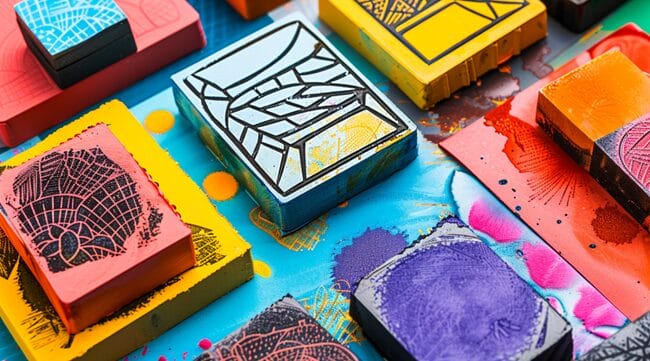
When selecting the right ink for your Lino printing project, we need to consider the drying time, working time, and ease of clean-up after use. Each ink type varies in pigment intensity and transparency, affecting the final outcome of your print.
It’s essential to understand these factors to ensure your chosen ink aligns with your artistic vision for the project.
Drying Time Considerations
For optimal results in your lino printing project, selecting the right ink based on drying time considerations is crucial for achieving the desired outcome.
When considering drying times, it’s essential to think about the following:
Drying Techniques:
- Use a drying rack to prevent smudging while allowing ample airflow around the prints.
- Consider using a heat gun to speed up the drying process, especially for oil-based inks.
- Experiment with different paper types to see how they affect drying times and the final look of your prints.
Choosing the appropriate drying techniques and ink type won’t only impact the efficiency of your printing process but also the overall quality of your lino prints.
Working Time and Clean-Up
Selecting the appropriate ink for your lino printing project involves considering the working time and clean-up process to ensure optimal results.
When it comes to ink drying, most modern safe inks are formulated to dry on absorbent surfaces like paper but stay wet on hard surfaces. This means that any ink smudges left around the print area can remain wet for weeks, posing a risk of transferring onto your final prints.
To avoid this, thorough cleaning after each printing session is crucial. Ensuring that excess ink is properly removed not only maintains the integrity of your prints but also prevents unwanted smudges and stains.
Taking the time to clean up diligently can significantly enhance the quality of your lino prints.
Pigment Intensity and Transparency
To ensure the ideal pigment intensity and transparency for your lino printing project, understanding the composition of modern ‘safe’ printmaking inks is crucial.
Most contemporary inks are made from vegetable oils like soya and linseed, forming the base to which different pigments are added.
Transparent inks, which have no added color, serve as the base for creating varying levels of pigment intensity and transparency. Hawthorn transparent ink, for example, resembles the richness of honey.
When selecting the right ink for your project, consider the following:
- Pigment selection plays a vital role in determining the intensity of colors.
- The transparency of the ink base influences the final appearance of the print.
- Experimenting with different pigment combinations can lead to unique and striking results.
Top Brands and Products for Lino Printing Inks

When it comes to top-notch inks for lino printing, we’ve got our eyes on Speedball Professional Relief Inks, Schmincke Aqua Inks, and Caligo Safe Wash Relief Inks.
These brands offer a wide range of colors, excellent coverage, and ease of use, making them favorites among printmakers.
Whether you’re a seasoned pro or just starting out in lino printing, these inks are sure to elevate your projects to the next level.
Speedball Professional Relief Inks
Speedball Professional Relief Inks, renowned for their exceptional quality and performance, stand out as top contenders in the realm of Lino printing inks.
These inks offer remarkable features such as:
- Consistent Results: The inks roll out consistently, ensuring each print is of high quality.
- Intense Colors: With lightfast pigments and no fillers, the prints result in intense and crisp colors.
- Ease of Use: Clean-up is a breeze with these professional-grade inks, as they can be easily washed off with soap and water or a traditional window cleaner.
The flagship color, Speedball® Supergraphic Black, further enhances the allure of the Speedball Professional Relief series, making it a preferred choice among artists for creating archival prints.
Schmincke Aqua Inks
High-quality and water-based, Schmincke Aqua Inks offer exceptional performance for lino printing, making them a top choice among artists seeking sharp prints with quick drying times.
These lino print inks are easy to apply due to their optimal open times, allowing artists to achieve precise results.
The Aqua Linoprint Inks dry quickly, becoming wipe-resistant after around 15 minutes, making the printing process efficient. With 15 vibrant shades and three metallic colors available, artists have a wide range to choose from.
Made with natural binders like gum arabic and high-quality pigments, these inks ensure maximum lightfastness and intensity, particularly evident in colors like Ivory Black.
The smooth consistency of Schmincke Aqua Inks allows for easy application on various surfaces like paper, felt, cardboard, and even wood, providing versatility in ink application for lino printing.
Caligo Safe Wash Relief Inks
Caligo Safe Wash Relief Inks offer artists a versatile and heavily pigmented option for lino printing, available in 150ml tubes or 500gm cans.
The ink consistency can be adjusted using additives like Caligo Safe Wash Relief Ink Extender or Caligo Safe Wash Oil.
Tack Reducer can help in making the ink spread more evenly, while Gamblin Magnesium Carbonate can stiffen the ink and reduce gloss.
To speed up drying time, Cranfield Wax Drier can be added, improving the mark and rub resistance of the dried print surface.
It’s crucial to add these modifiers sparingly to avoid losing details or altering the ink’s properties too drastically.
Tips for Maintaining and Storing Your Lino Printing Inks
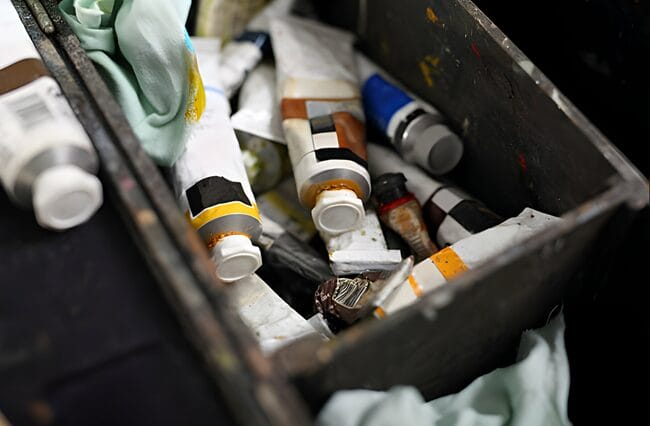
When it comes to lino printing inks, proper maintenance is key to ensuring their longevity and quality.
We’ll cover essential techniques for cleaning your inks and provide storage recommendations to keep them in optimal condition.
Proper Cleaning Techniques
To effectively maintain and store your lino printing inks, utilizing proper cleaning techniques is essential for preserving the quality of your linocuts and ensuring their longevity.
When cleaning linocuts, especially those with oil-based inks, avoid using hot soapy water as it can damage the linocut block. Instead, opt for gentle cleaning fluids like vegetable oil or ZestIt to break down the ink effectively.
These options are safer and more efficient than harsh chemicals like white spirits or turps. Vegetable oil, in particular, is affordable and easy to find, making it a practical choice for cleaning your linocuts without risking damage.
Remember to be gentle when cleaning to protect your valuable linocut artworks.
- Avoid using harsh chemicals like white spirit or turps
- Use gentle cleaning fluids like vegetable oil or ZestIt
- Be gentle when applying the cleaning fluid to protect the linocut
Storage Recommendations for Longevity
For optimal preservation and longevity of your lino printing inks, implementing proper storage techniques is imperative.
To ensure ink preservation, store your inks in a cool, dry place away from direct sunlight and extreme temperatures.
Seal the containers tightly to prevent air exposure, which can lead to ink drying out or thickening.
It’s best to keep the inks in their original containers or transfer them to airtight, light-blocking containers if needed.
Additionally, make sure to label each ink container with the color name and date of purchase to track their age.
Exploring Experimental Inks for Unique Printmaking Techniques
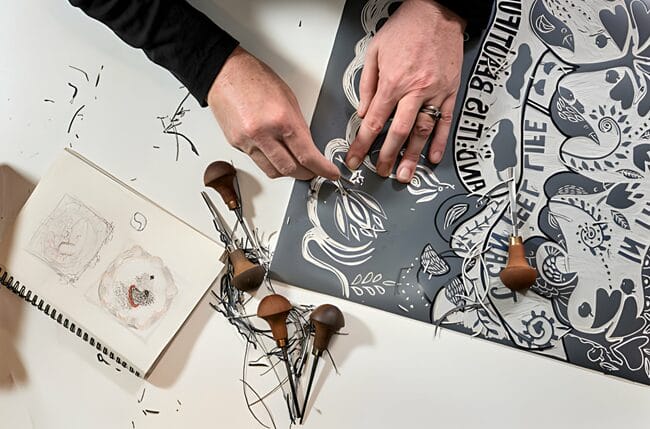
When looking to push the boundaries of traditional lino printing, experimenting with different types of inks can yield exciting results.
Heat-set inks offer a unique opportunity to create special effects and textures that can add depth to your prints.
Additionally, exploring water-based formulations allows for the creation of intricate layers of ink, enabling artists to achieve a multi-dimensional and captivating final piece.
Using Heat-Set Inks for Special Effects
Exploring the use of heat-set inks for special effects in printmaking opens up a realm of creative possibilities and unique techniques for artists to experiment with.
When aiming for special effects, consider these options:
- Use an iron: Apply heat to the printed design for at least 2-2.5 minutes, ensuring the ink reaches 160°C for curing.
- Use a heat gun: Move the heat gun around the print for one to two minutes, evenly heating the entire design.
- Use a heat press: Set it to 320 degrees, and press the garment for at least 40 seconds, repeating until the entire design is heated, adjusting pressure when using puffer ink.
Exploring these methods can help achieve remarkable special effects in your printmaking endeavors.
Creating Layers of Ink with Water-Based Formulations
To enhance the depth and complexity of your lino prints, we can explore the technique of creating intricate layers of ink using water-based formulations, introducing a realm of experimental inks for unique printmaking techniques.
When working with water-based inks, understanding ink viscosity is crucial. Varying the viscosity allows for different effects in your prints.
Thicker ink can create more defined and bold layers, while thinner ink can be used for delicate and translucent layers.
Experimenting with different viscosities can result in stunning textures and visual interest in your prints.
Additionally, water-based formulations offer the advantage of being more environmentally friendly and easier to clean up compared to oil-based inks, making them a versatile choice for artists looking to push the boundaries of traditional lino printing techniques.
How to Troubleshoot Common Ink Issues in Lino Printing?

When troubleshooting common ink issues in lino printing, we often encounter challenges like ink drying too quickly or prints fading or smudging after printing.
To overcome these obstacles, it’s crucial to adjust factors such as ink consistency, drying time, and pressure during the printing process.
Dealing with Ink Drying Too Quickly
Experiencing issues with ink drying too quickly in lino printing can be frustrating, especially when using water-soluble pigment-based inks like those from brands such as Speedball, Daler-Rowney, Ocaldo, and Demco.
To troubleshoot this common issue, consider the following:
- Check ink consistency: Ensure the ink isn’t too thick or too thin, as this can affect drying time.
- Use a retarder: Adding a small amount of retarder to your ink can help slow down the drying process, especially in warm and dry conditions.
- Maintain optimal temperature: Print in a space at room temperature to prevent ink from drying too quickly in cold environments.
Preventing Fading or Smudging After Printing
In lino printing, preventing fading or smudging after printing requires careful attention to ink application techniques and paper selection to ensure crisp and long-lasting results.
Proper ink application is crucial in avoiding smudging. Using a brayer or roller helps apply ink evenly to the block, reducing the risk of unintentional transfer or spreading.
Additionally, allowing ample drying time between inking and printing is essential to prevent ink from smudging.
When selecting paper, opt for thicker options with a smooth surface like Stonehenge Paper or Rives BFK Paper to provide a stable base for the ink.
Conclusion
In conclusion, finding the best ink for lino printing can be a rewarding journey.
By exploring different types of inks and experimenting with various techniques, you can create unique and stunning prints.
Remember to properly maintain and store your inks to ensure their longevity.
Keep pushing the boundaries with new inks and techniques to elevate your lino printing game.

